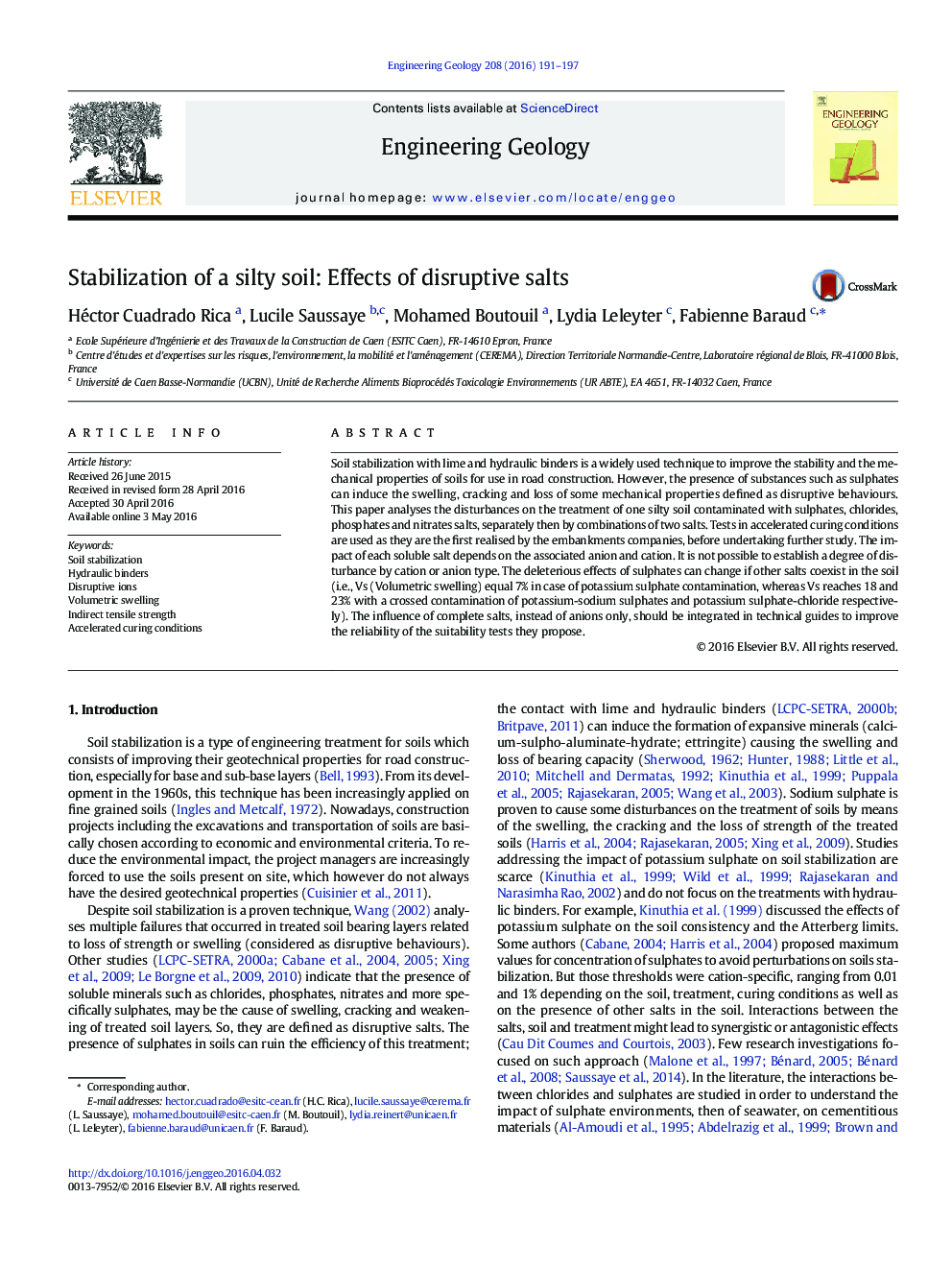| Article ID | Journal | Published Year | Pages | File Type |
|---|---|---|---|---|
| 6447669 | Engineering Geology | 2016 | 7 Pages |
Abstract
Soil stabilization with lime and hydraulic binders is a widely used technique to improve the stability and the mechanical properties of soils for use in road construction. However, the presence of substances such as sulphates can induce the swelling, cracking and loss of some mechanical properties defined as disruptive behaviours. This paper analyses the disturbances on the treatment of one silty soil contaminated with sulphates, chlorides, phosphates and nitrates salts, separately then by combinations of two salts. Tests in accelerated curing conditions are used as they are the first realised by the embankments companies, before undertaking further study. The impact of each soluble salt depends on the associated anion and cation. It is not possible to establish a degree of disturbance by cation or anion type. The deleterious effects of sulphates can change if other salts coexist in the soil (i.e., Vs (Volumetric swelling) equal 7% in case of potassium sulphate contamination, whereas Vs reaches 18 and 23% with a crossed contamination of potassium-sodium sulphates and potassium sulphate-chloride respectively). The influence of complete salts, instead of anions only, should be integrated in technical guides to improve the reliability of the suitability tests they propose.
Related Topics
Physical Sciences and Engineering
Earth and Planetary Sciences
Geotechnical Engineering and Engineering Geology
Authors
Héctor Cuadrado Rica, Lucile Saussaye, Mohamed Boutouil, Lydia Leleyter, Fabienne Baraud,
